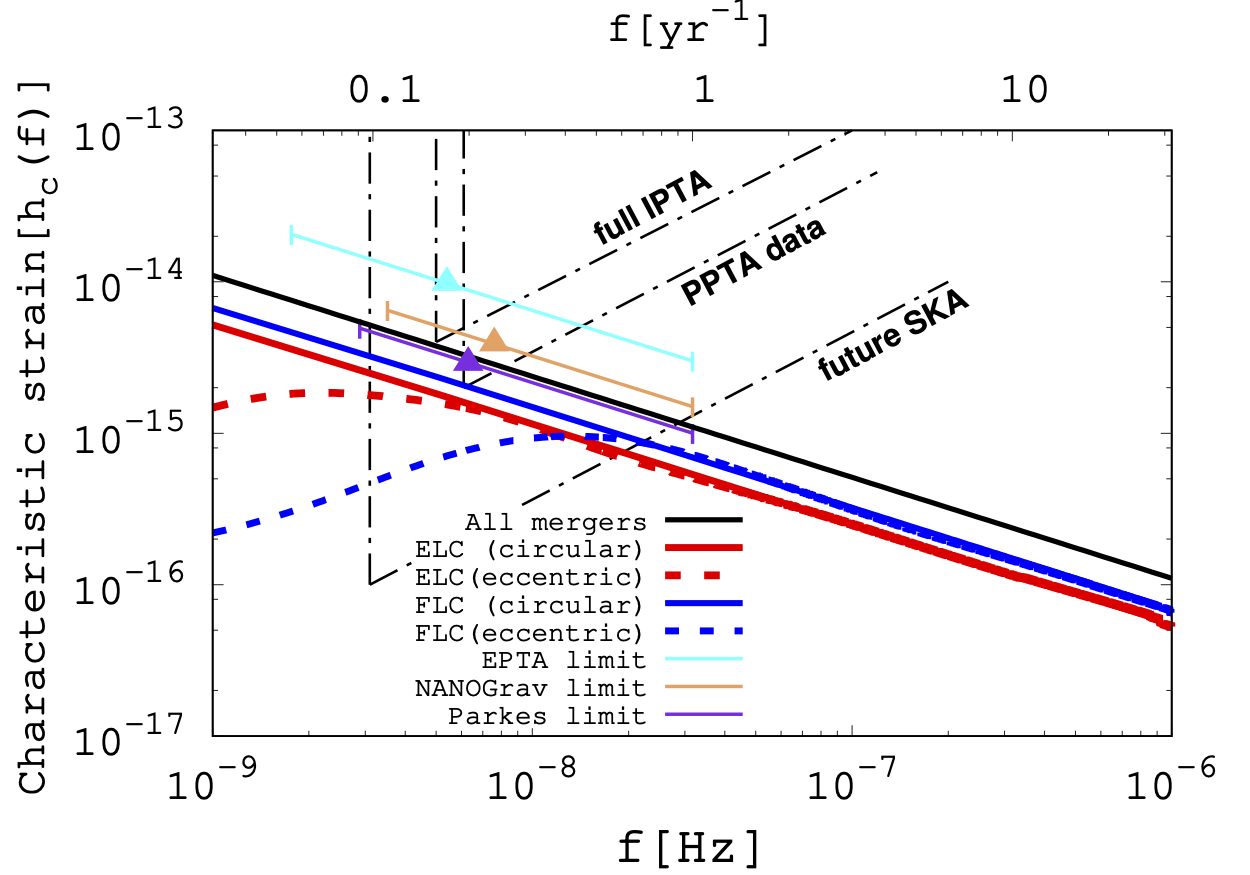One of the fundamental questions in Astrophysics whether supermassive black hole (SMBH) binaries would further decay and eventually merge (famously known as the “final parsec problem”). In this study, my collaborators, Rosalba Perna, Zoltan Haiman, Jeremiah Ostriker, Nicholas Stone, and I tackled this problem using N-body simulations. We model BH mergers with two extreme binary decay scenarios for the ‘hard binary’ stage: a full or an empty loss-cone. Our dynamical approach is the first attempt to study the dynamical evolution of multiple SMBHs in the host galaxies undergoing mergers with various mass ratios. We find that SMBH binaries are able to merge in both scenarios via multi-body interactions or dynamical friction. There is no “final parsec” problem in either scenario. Using the computed merger rates, we infer the stochastic gravitational wave background (GWB). See our paper for more details!
This figure shows our estimates for the strain amplitude compared with the current/future expected sensitivities.

